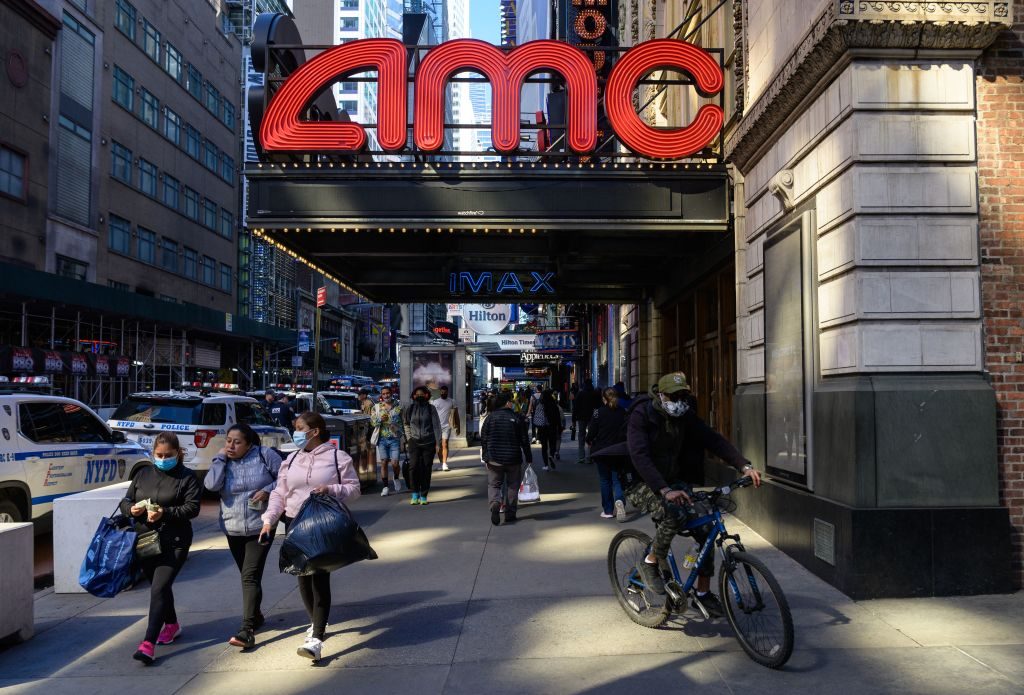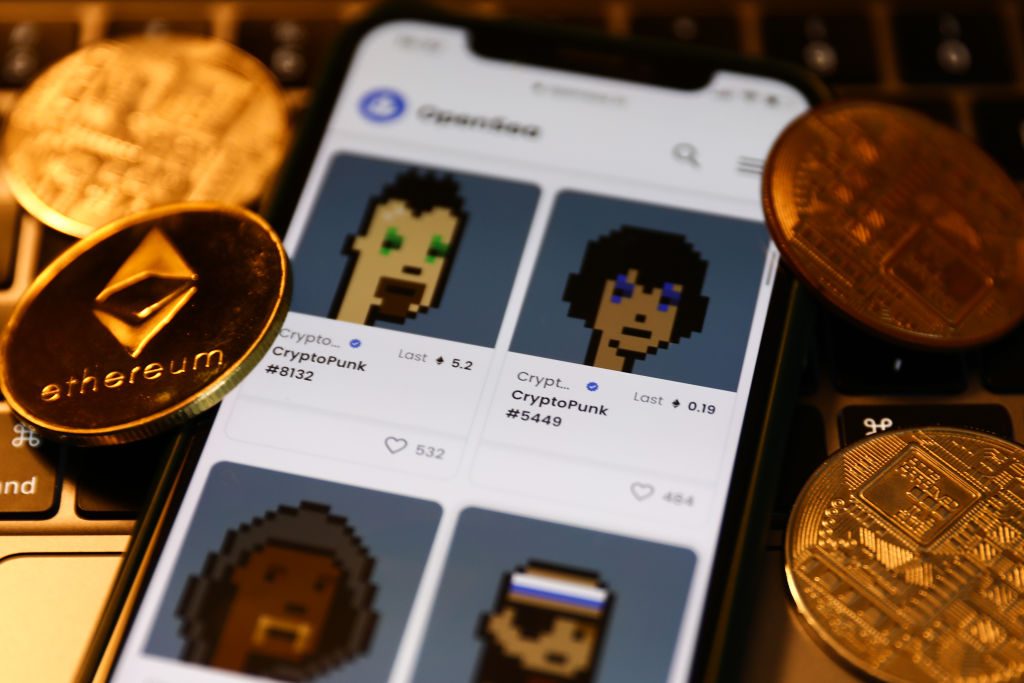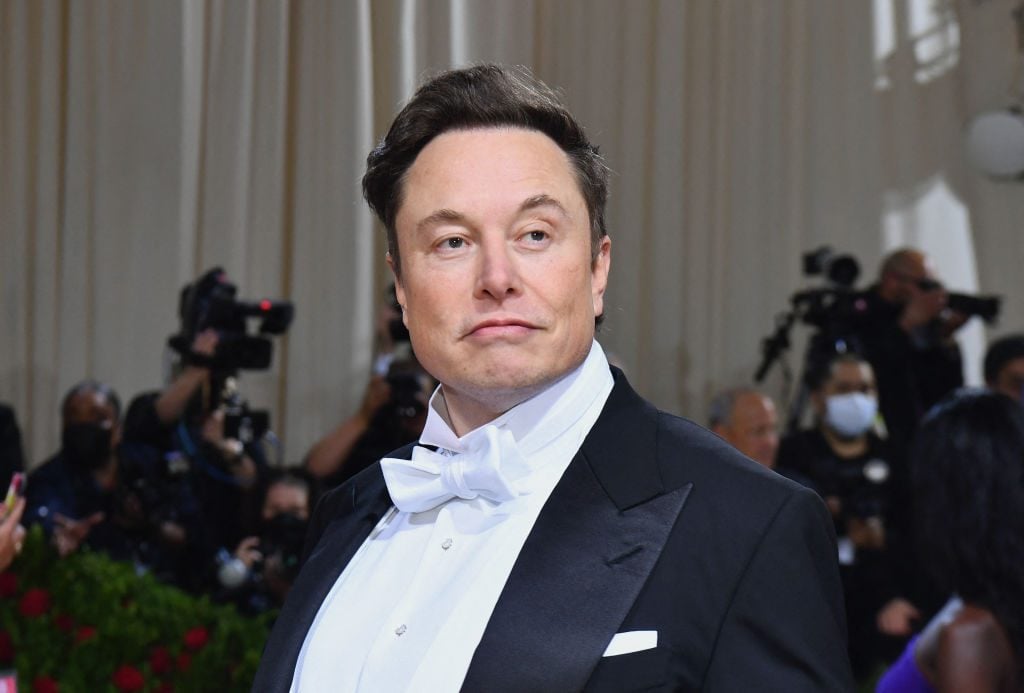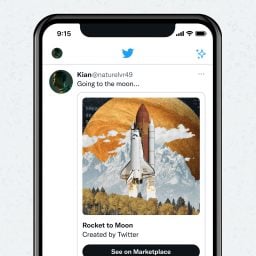Every Wednesday morning, artnet News brings you The Gray Market. The column decodes important stories from the previous week—and offers unparalleled insight into the inner workings of the art industry in the process.
This week, another sojourn into the cultural impact of social media…
BIRDS FLYING HIGH
Within the universes of media, culture, tech, and business, Elon Musk’s pending acquisition of Twitter has become as inescapable as the asteroid that ended the dinosaurs. Yet amid a meteor storm of takes, the art world has remained a rare safe haven. While this relative inattention to the story is refreshing on one level, it also underscores a paradox about our industry’s long-term disinterest in the platform.
Since Twitter’s 2006 launch, the art market—a niche space dedicated to building value through storytelling for objects with no intrinsic worth—has largely ignored what has proven to be one of the most powerful forums ever created for doing exactly that. Yet on closer analysis, Musk’s conquest of Twitter actually clarifies why the art trade has mostly been content to ignore what seems like the readymade utility of the platform, even as adjacent markets use it to send asset values to the moon.
To understand what’s happening, we have to return again to the notion of the attention economy. In a recent podcast episode, Ezra Klein of the New York Times laid out the overarching concept, as well as the basic model for how it has made Twitter a uniquely powerful force over the past 16 years:
We could say that attention has always been a valuable resource. It’s always been something that at some level can be traded into currency. Elite attention is a particularly valuable form of that resource. And there has never been a market as liquid with elite attention and with as low a barrier to entry to get near that attention, particularly if you already have some purchase, as Twitter. It’s why people used to go to Davos. But now it happens all the time right from your computer or your phone…
It’s true that a whole lot of people will scoff at this portrayal of Twitter as the grand agenda-setter. The platform only reported 229 million active monthly users in its Q1 2022 earnings, a tiny fraction of the same metric on Facebook (2.9 billion), Instagram (2 billion), or even TikTok (1 billion). Skeptics also no doubt love that between five and 30 percent of Twitter accounts are just bots, according to social auditing tool SparkToro.
Yet the key phrase in Klein’s argument is “elite attention.” Yes, only a minority of people engage with Twitter. But many members of that minority are decision makers or key players in what Klein calls “the most important industries in the world—politics, finance, entertainment, media, [and] technology.” So even if you don’t use Twitter, the people who do play an outsize role in your life and your understanding of the world anyway. (There is, of course, no more concise proof of this argument than the phrase “President Trump.”)
To me, this sounds like a dream scenario for the art market. What is the art trade if not a machine for converting the attention of a small group of elites into money and influence? And yet, the most successful commercial deployments of Twitter also show that the challenge is knottier than it seems.

People walk past an AMC and IMAX movie theatre in the theatre district near Broadway on May 6, 2021 in New York City. (Photo by Angela Weiss / AFP) (Photo by ANGELA WEISS/AFP via Getty Images)
FROM ECONOMY TO ECONOMEME
When it comes to Twitter’s impact on finance, the omega outcome is the meme stock. For the uninitiated, the term describes any publicly traded company whose share price and trading volume have been rocket-boosted by chatter across social platforms, primarily Twitter, Reddit (home of the now-antiheroic WallStreetBets forum), Discord, and even TikTok.
While sentiment is always a factor in the performance of any tradable financial asset, the telltale sign of meme stocks is that online chatter so thoroughly overrules economic fundamentals that the latter become irrelevant (at least in the short term). As Zillennial finance analyst Kyla Scanlon explained on a recent episode of the “Odd Lots” podcast: “The stock is sort of separate from the company itself. There’s AMC the company, and then there’s AMC the stock, and they don’t seem to be the same thing.”
Her example, the resurrected-from-near-death U.S. movie-theater chain AMC, has arguably gone on an even wilder journey than GameStop, the video game retailer that introduced much of the world to the concept of meme stocks in early 2021. But what matters in both cases is that a band of online outsiders began building up and trading on a grassroots narrative holding that these companies were worth far more than institutional investors believed, sending the stocks to dizzying new market heights—and mutating into a form of de facto class warfare along the way.
The logical conclusion of the meme-stock principle is what Axios Capital’s Felix Salmon labeled “the Elon Musk memelord thesis.” It holds that Twitter has dragged us all to a point where a key stakeholder can become a one-person market-maker, 280 characters at a time. Tech and business writer Ranjan Roy made the most sweeping version of this case in his Margins newsletter, arguing that Musk’s epic (some would say manic) tweeting since mid-2018 has been a strategic play to keep himself and his main corporate interest, Tesla, at the molten core of the attention economy, directly and substantially contributing to the vertiginous rise in Tesla’s share price in the process.
At the top end, however, Salmon convincingly rejects the Elon Musk memelord thesis. He contends that Tesla—a trillion-dollar company that began 2022 trading at nearly $1,200 a share—is much too large an entity, and much too expensive a stock, for its CEO’s shitposting to keep its value at interstellar heights. Institutional investors just aren’t going to behave like Musk fanboys; the stakes are too high.
Yet the soft spot in Roy’s argument seems like it should fortify Twitter’s art-market utility. Practically every analyst I trust agrees that the memelord thesis could temporarily pay massive dividends when applied to smaller companies, even when “smaller” means a market cap of a few billion dollars (as in AMC or GameStop). In theory, the more niche the interest, the more effective the platform should be in mobilizing online demand through social-media storytelling. Perfect for the art trade—unless you dig deeper.

CryptoPunks collection in OpenSea displayed on a phone screen. (Photo by Jakub Porzycki/NurPhoto via Getty Images)
THE BASEMENT FLOOR
Even more than meme stocks, cryptocurrencies and NFTs appear to be the best models for using Twitter to build value around artworks. But by acknowledging where the categories diverge, comparing them unlocks an important part of the art market’s historical attitude toward the platform.
Meme stocks have at least some quantifiable fundamentals—line items like annual revenue, free cash flow, debt-to-equity ratio, and more—that provide a foundation for valuation. Proponents can debate whether, say, a meme stock’s fundamentals are being mistranslated into its share price because of an overestimation of qualitative factors. But unless someone on the inside is cooking the books, it’s nonsense to say that a company’s annual sales are anything other than what’s stated in SEC filings.
In contrast, artworks and crypto assets (I’m using “assets” loosely here) are valued purely on sentiment and supply. Analysts can appraise correlations between prices and certain measurable traits, like the dimensions of a painting or the size of an NFT artist’s social following; it’s just that the worth of these correlations remains forever subjective. Nowhere in the makeup of a painting, an NFT, or a cryptocurrency can we find anything as straightforward and universal as the value of a dollar in corporate cash flow.
Despite the strong similarities between artworks and crypto assets, however, the question of supply opens a rift between them. On the high end, a dedicated contemporary artist might make a few thousand pieces over the course of their lifetime; less prolific ones might complete only a few hundred. With traditional dealers influencing a studio, access to those artworks will be meticulously controlled, and resale opportunities will be infrequent by the standards of a typical retail market.
Now compare that scarcity to the crypto space. Practically every one of the many PFP projects launched month after month consist of 10,000 NFTs, each of which can be immediately flipped on any number of resale platforms if sufficient demand exists. Fungible tokens are generally even more plentiful. There are currently about 19 million bitcoin in circulation, and almost 133 billion Dogecoin, the alt coin (or, in critical jargon, shitcoin) whose value Elon Musk has been periodically trying to meme up to a dollar since 2021.
Unique and extremely limited-edition NFTs are minted regularly, but even here the crypto economy has engineered opportunities for a larger audience to transition into derivative assets. Can’t get your hands on an actual Beeple NFT? Buy some B20, the alt coin tied to the Beeple-headlined NFT collection amassed by Metakovan and Twobadour’s crypto fund, Metapurse! (Or better yet, don’t.)
The point is, while artworks and crypto assets both have little to no intrinsic value, only crypto assets thrive on trading volume. That means crypto entrepreneurs’ best chances for success rely on building audiences similar in size to those of corporations. Art entrepreneurs, on the other hand, can still make healthy markets by winning over a few thousand elites at most, and in many cases only a few hundred. You don’t need to memelord a path to millions of Twitter fans to secure such a narrow, intensely curated buyer base. In fact, it’s possible that trying to do so would amount to self-sabotage.
This difference helps explain why New York mag critic Jerry Saltz has tweeted his way to more followers (north of 541,000) than any mega-gallery (Gagosian gets closest, with 390,000 followers), major auction house (Christie’s, Sotheby’s, and Phillips count about 411,000 followers combined), or artist lacking early roots in NFTs (Takashi Murakami soars highest of the likely candidates, with 318,200 followers).
In fact, even the folks in the art business widely (and rightly) recognized for using Twitter to expand the traditional art audience would still only qualify as micro influencers in any other industry. Author, critic, and recently hired Pace Gallery artist liaison Kimberly Drew has 54,000 followers; author, curator, and Gagosian director Antwaun Sargent has just over 15,000; and digital strategist JiaJia Fei, perhaps the art world’s original social-media star, has 12,000.
It’s telling that almost every one of the corporate and individual account holders above has a dramatically larger audience on Instagram than Twitter. (Strangely, the lone exception is Saltz.) The inter-platform discrepancy makes intuitive sense on one level. We art people are a visual bunch, so it’s not surprising that we would be more effective on a social app that prioritizes images over text.
At the same time, I no longer think sensory preference is the only variable in the art market’s indifference to Twitter. After all, NFTs are primarily a visual medium, too, and Twitter is nevertheless a vital communications organ for crypto creators, buyers, and sellers.
Instead, I’m inclined to believe that the art establishment’s position on Twitter is still more proof of its long-running predilection for cultivating exclusivity. Which means that no matter how thoroughly Musk might alter Twitter if his acquisition goes through, it probably won’t change much of anything about how the art trade at large operates there—or more to the point, doesn’t.
[The Ezra Klein Show]
That’s all for this week. ‘Til next time, remember: rule changes make no difference to players who stay on the sidelines.











